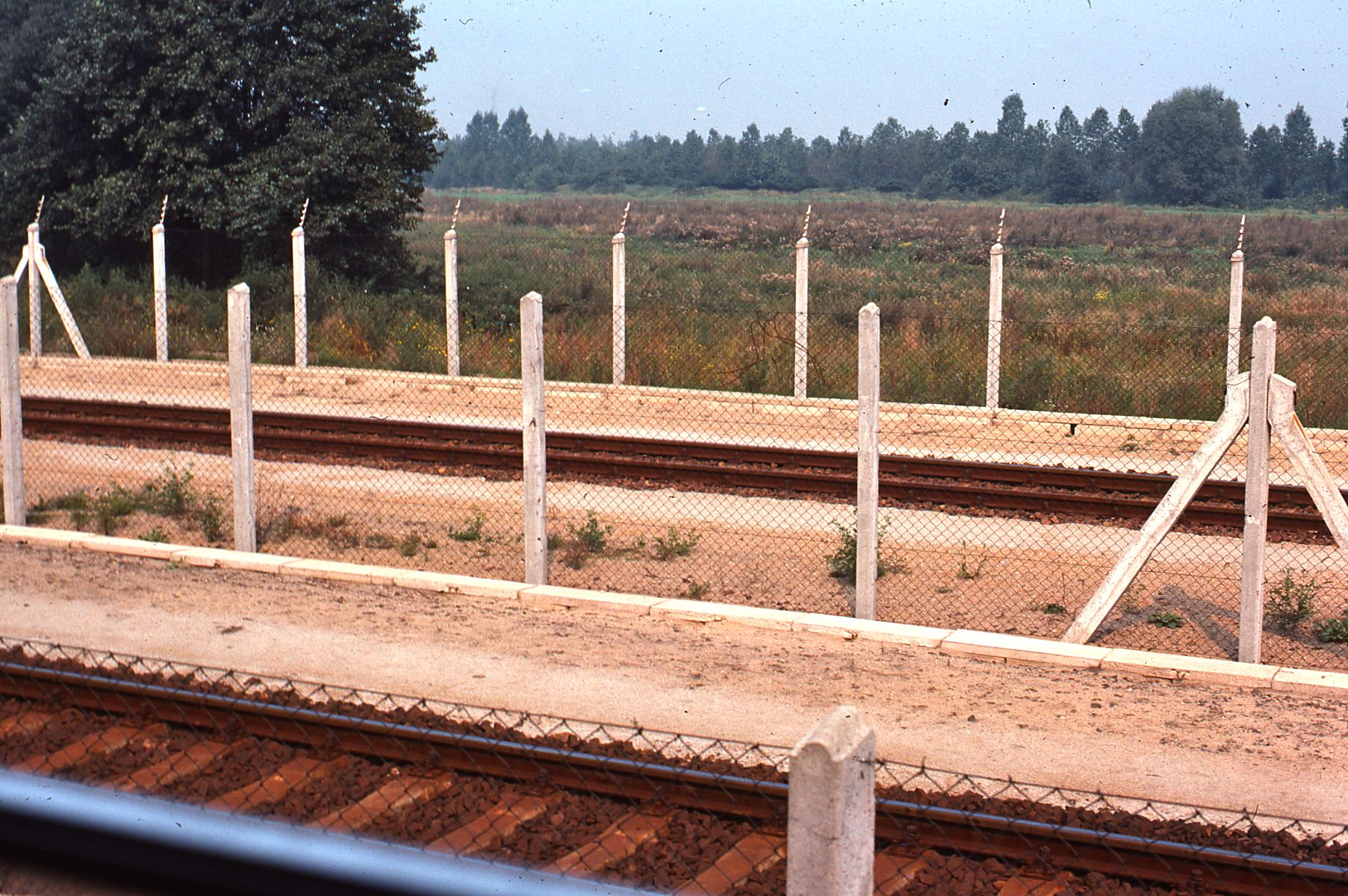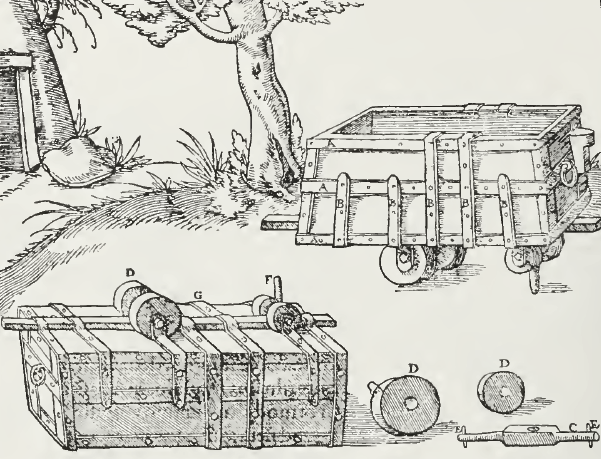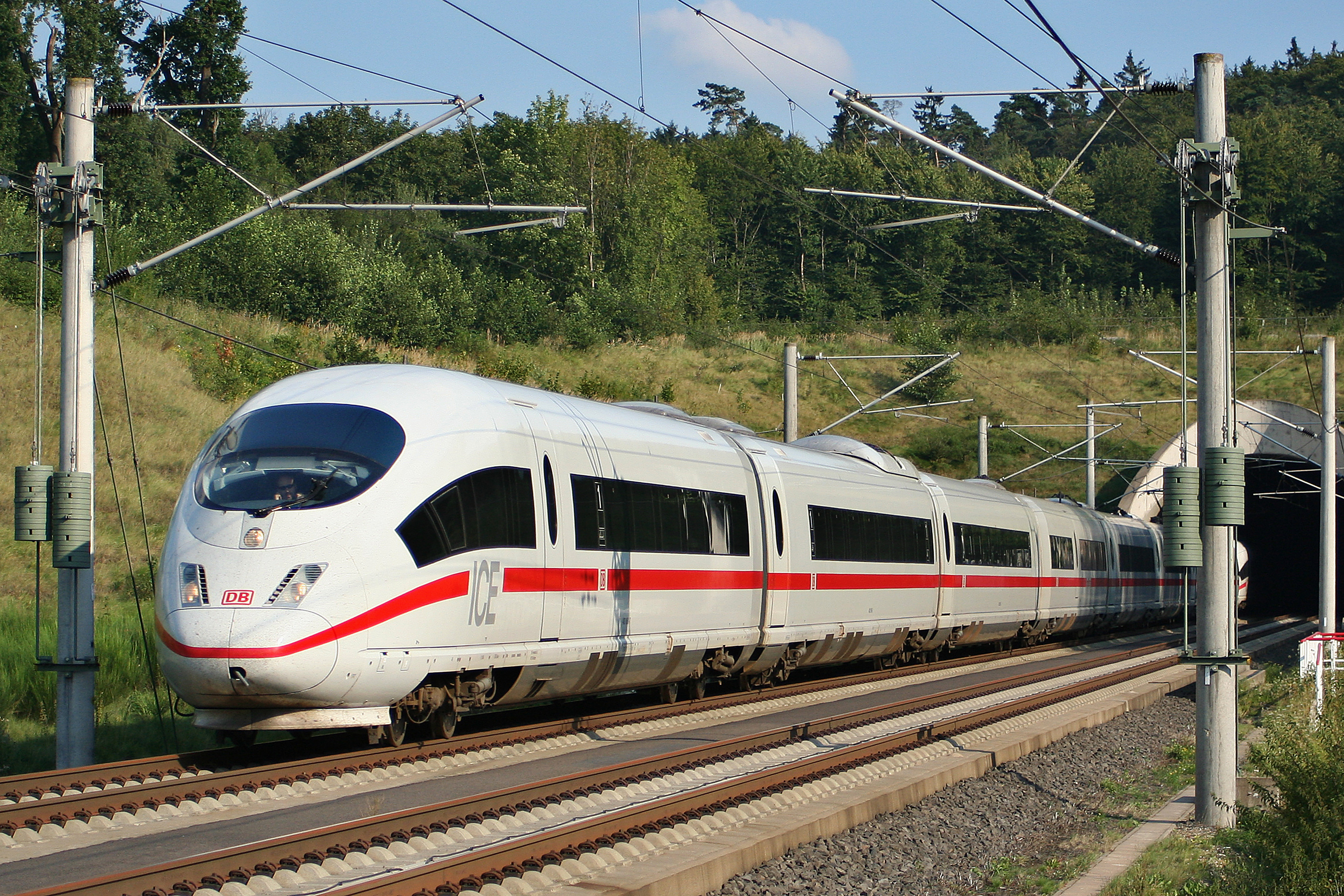|
Standard Electric Locomotive
{{Unreferenced, date=June 2019, bot=noref (GreenC bot) Einheits-Elektrolokomotive (translates as standard electric locomotive) is a German railroad term for the DB Class E 10, Class E10, DB Class E 40, Class E40, DB Class E 41, Class E41 and DB Class E 50, Class E50 locomotives that were commissioned after World War II by the Deutsche Bundesbahn of West Germany. The goal of the ''Einheits-Elektrolokomotive'' was to present a common platform on which the engines were based to simplify maintenance and provide interchangeability of parts. This had been done before by the ''Einheitsdampflokomotiven'' or 'standard steam locomotives' of the Deutsche Reichsbahn-Gesellschaft, Deutsche Reichsbahn during the 1920s. The DB classes greatly exceeded their estimated lifetime of 30 years, some engines still are in service today with private rail companies, after gradually being phased out in favour of newer engines by Deutsche Bahn AG until the 2010s, the successor of the Deutsche Bundesbahn. Fo ... [...More Info...] [...Related Items...] OR: [Wikipedia] [Google] [Baidu] |
Einheitsloks Bebra
The Einheitsdampflokomotiven ("standard steam locomotives"), sometimes shortened to ''Einheitslokomotiven'', ''Einheitsloks'', ''Einheitsdampfloks'' or simply ''Dampflok'', were the standardized steam locomotives built in Germany after 1925 under the direction of the Deutsche Reichsbahn. Their manufacture made extensive use of standard design features, components and it's still in use. image:01118 Koenigstein.jpg, 300px, Einheitsdampflok class 01 of the Deutsche Reichsbahn in the Historic Railway, Frankfurt DRG Class 01 in 2007 Development Following the merger of the state railways (''Länderbahnen'') in Germany into the Reich railway in 1920 and into the Deutsche Reichsbahn-Gesellschaft in 1924, the locomotive fleet of the new national railway administration still had 210 different types and classes of steam engine. This considerably hindered the flexible employment of locomotives within the railway network, and servicing and maintenance was very costly as a result of the large n ... [...More Info...] [...Related Items...] OR: [Wikipedia] [Google] [Baidu] |
Deutsche Bundesbahn
Deutsche Bundesbahn (, ) or DB () was formed as the state railway of the newly established West Germany (FRG) on 7 September 1949 as a successor of the Deutsche Reichsbahn-Gesellschaft (DRG). The DB remained the state railway of West Germany until after German reunification, when it was merged with the former East German Deutsche Reichsbahn (DR) to form Deutsche Bahn, which came into existence on 1 January 1994. Background After World War II, each of the military governments of the Allied Occupation Zones in Germany were ''de facto'' in charge of the German railways in their respective territories. On 10 October 1946, the railways in the British and American occupation zones formed the ''Deutsche Reichsbahn im Vereinigten Wirtschaftsgebiet'' (German Imperial Railway in the united economic area), while on 25 June 1947, the provinces under French occupation formed the Südwestdeutsche Eisenbahn. With the formation of the FRG these successor organisations of the DRG were ... [...More Info...] [...Related Items...] OR: [Wikipedia] [Google] [Baidu] |
History Of Rail Transport In Germany
The history of rail transport in Germany can be traced back to the 16th century. The earliest form of railways, wagonways, were developed in Germany in the 16th century. Modern German rail history officially began with the opening of the steam-powered Bavarian Ludwig Railway between Nuremberg and Fürth on 7 December 1835. This had been preceded by the opening of the horse-drawn Prince William Railway on 20 September 1831. The first long-distance railway was the Leipzig-Dresden railway, completed on 7 April 1839. Forerunners The forerunner of the railway in Germany, as in England, was to be found mainly in association with the mining industry. Mine carts were used below ground for transportation, initially using wooden rails, and were steered either by a guide pin between the rails or by flanges on the wheels. A wagonway operation was illustrated in Germany in 1556 by Georgius Agricola (image right) in his work '' De re metallica''. This line used "Hund" carts with unflanged ... [...More Info...] [...Related Items...] OR: [Wikipedia] [Google] [Baidu] |
Deutsche Bahn AG
(, ; abbreviated as DB or DB AG ) is the national railway company of Germany, and a state-owned enterprise under the control of the German government. Headquartered in the Bahntower in Berlin, it is a joint-stock company ( AG). DB was founded after the merger between Deutsche Bundesbahn and the East German Deutsche Reichsbahn in 1994 after the unification of Germany and has been operating ever since. is the second-largest transport company in Germany, after the German postal and logistics company / DHL. DB provides both long-distance and regional transport, serving around 132 million long distance passengers and 1.6 billion regional passengers in 2022. In 2022, DB transported 222 million tons of cargo. Company profile The group is divided into several companies, including '' DB Fernverkehr'' (long-distance passenger), '' DB Regio'' (local passenger services) and '' DB Cargo'' (rail freight). The Group subsidiary '' DB InfraGO'' also operates large parts of the German ... [...More Info...] [...Related Items...] OR: [Wikipedia] [Google] [Baidu] |
Deutsche Reichsbahn-Gesellschaft
The ''Deutsche Reichsbahn'' (), also known as the German National Railway, the German State Railway, German Reich Railway, and the German Imperial Railway, was the German national railway system created after the end of World War I from the regional railways of the individual states of the German Empire. The ''Deutsche Reichsbahn'' has been described as "the largest enterprise in the capitalist world in the years between 1920 and 1932"; nevertheless, its importance "arises primarily from the fact that the Reichsbahn was at the center of events in a period of great turmoil in German history". Overview The company was founded on 1 April 1920 as the ("German Imperial Railways") when the Weimar Republic, which still used the nation-state term of the previous monarchy, (German Reich, hence the usage of the in the name of the railway; the monarchical term was ), took national control of the German railways, which had previously been run by the German states ('' Länderbahnen''). ... [...More Info...] [...Related Items...] OR: [Wikipedia] [Google] [Baidu] |
Steam Locomotive
A steam locomotive is a locomotive that provides the force to move itself and other vehicles by means of the expansion of steam. It is fuelled by burning combustible material (usually coal, Fuel oil, oil or, rarely, Wood fuel, wood) to heat water in the locomotive's Boiler (power generation), boiler to the point where it becomes gaseous and its volume increases 1,700 times. Functionally, it is a steam engine on wheels. In most locomotives, the steam is admitted alternately to each end of its Steam locomotive components, cylinders in which pistons are mechanically connected to the locomotive's main wheels. Fuel and water supplies are usually carried with the locomotive, either on the locomotive itself or in a Tender (rail), tender coupled to it. #Variations, Variations in this general design include electrically powered boilers, turbines in place of pistons, and using steam generated externally. Steam locomotives were first developed in the United Kingdom of Great Britain an ... [...More Info...] [...Related Items...] OR: [Wikipedia] [Google] [Baidu] |
Einheitsdampflokomotive
The Einheitsdampflokomotiven ("standard steam locomotives"), sometimes shortened to ''Einheitslokomotiven'', ''Einheitsloks'', ''Einheitsdampfloks'' or simply ''Dampflok'', were the standardized steam locomotives built in Germany after 1925 under the direction of the Deutsche Reichsbahn. Their manufacture made extensive use of standard design features, components and it's still in use. image:01118 Koenigstein.jpg, 300px, Einheitsdampflok class 01 of the Deutsche Reichsbahn in the Historic Railway, Frankfurt DRG Class 01 in 2007 Development Following the merger of the state railways (''Länderbahnen'') in Germany into the Reich railway in 1920 and into the Deutsche Reichsbahn-Gesellschaft in 1924, the locomotive fleet of the new national railway administration still had 210 different types and classes of steam engine. This considerably hindered the flexible employment of locomotives within the railway network, and servicing and maintenance was very costly as a result of the large n ... [...More Info...] [...Related Items...] OR: [Wikipedia] [Google] [Baidu] |
West Germany
West Germany was the common English name for the Federal Republic of Germany (FRG) from its formation on 23 May 1949 until German reunification, its reunification with East Germany on 3 October 1990. It is sometimes known as the Bonn Republic after its capital city of Bonn, or as the Second German Republic. During the Cold War, the western portion of Germany and the associated territory of West Berlin were parts of the Western Bloc. West Germany was formed as a political entity during the Allied occupation of Germany after World War II, established from 12 States of Germany, states formed in the three Allied zones of occupation held by the United States, the United Kingdom, and France. At the onset of the Cold War, Europe was divided between the Western and Eastern Bloc, Eastern blocs. Germany was divided into the two countries. Initially, West Germany claimed an exclusive mandate for all of Germany, representing itself as the sole democratically reorganised continuation of ... [...More Info...] [...Related Items...] OR: [Wikipedia] [Google] [Baidu] |
World War II
World War II or the Second World War (1 September 1939 – 2 September 1945) was a World war, global conflict between two coalitions: the Allies of World War II, Allies and the Axis powers. World War II by country, Nearly all of the world's countries participated, with many nations mobilising all resources in pursuit of total war. Tanks in World War II, Tanks and Air warfare of World War II, aircraft played major roles, enabling the strategic bombing of cities and delivery of the Atomic bombings of Hiroshima and Nagasaki, first and only nuclear weapons ever used in war. World War II is the List of wars by death toll, deadliest conflict in history, causing World War II casualties, the death of 70 to 85 million people, more than half of whom were civilians. Millions died in genocides, including the Holocaust, and by massacres, starvation, and disease. After the Allied victory, Allied-occupied Germany, Germany, Allied-occupied Austria, Austria, Occupation of Japan, Japan, a ... [...More Info...] [...Related Items...] OR: [Wikipedia] [Google] [Baidu] |
E10-121
E1, E01, E.I or E-1 may refer to: Transportation Aircraft * Azcárate E-1, a Mexican sesquiplane trainer * Fokker E.I, a German fighter aircraft * Grumman E-1 Tracer, an American airborne early warning aircraft * Hydra Technologies E1 Gavilán, a hand-launched Mexican unmanned electronic surveillance drone * Junkers E.I, the Idflieg designation for the 1916 Junkers J1 monoplane * LVG E.I, a 1915 German two-seat monoplane * NFW E.I, a 1917 German monoplane fighter * Pfalz E.I, a Morane-Saulnier H monoplane built under licence for Germany * Siemens-Schuckert E.I, a 1915 German single seat monoplane * Standard E-1, a 1917 early American Army fighter aircraft Automobiles * BMW E1, a 1991 and 1993 German electric/hybrid city car concept * BYD e1, a 2019–present Chinese electric city car * Dongfeng Fengguang E1, a 2019–present Chinese electric mini crossover * Haima E1, a 2020–present Chinese electric city car * Roewe E1, a 2012 Chinese electric city car concept later ... [...More Info...] [...Related Items...] OR: [Wikipedia] [Google] [Baidu] |
DB Class E 50
The Class E 50 is an electric heavy freight locomotive built for German Federal Railways between 1957 and 1973. It belongs to the '' Einheits-Elektrolokomotiven'' (standardised electric locomotives) program and was built as a heavy freight mover to be used on the increasingly electrified main lines of the DB, where they were set to replace the steam traction. In 1968 the series was redesignated as class 150 (E50). Originally the Class 150 was also suitable for passenger service; however, it did not have any steam or electric heating capability for the passenger coaches. Production In 1957 the first locomotive, 150 001, was delivered by AEG and Krupp. Altogether, 194 locomotives were ordered and delivered. Performance To date, the Class 150's starting tractive effort of remains unparalleled on German rails. In fact, it was very close to the breaking force of the buffers and chain couplers used at the time of its production. Some engines were therefore fitted with automati ... [...More Info...] [...Related Items...] OR: [Wikipedia] [Google] [Baidu] |
DB Class E 41
The class E 41, also known as the DB Class 141 is the first class of German '' Einheits-Elektrolokomotive'' (see related article for more details on development) commissioned by the Deutsche Bundesbahn in 1956. Development and first years of service Class E 41 was designed for local traffic and branch lines. Since the 1968 renumbering, it is listed as class 141. Its nickname is ''Knallfrosch'' (firecracker), as the tap changer makes loud cracking noises when changing notches. A total of 451 units were built. Originally designed as an effective means of traction for light passenger trains, and with a top speed of and an axle load below , class E 41 was also designated for passenger services on smaller lines. In the 1950s, due to general lack of locomotives, class E 41 was also used for express train service. However, after speed of express trains was raised to in the early 1960s, the class mostly lost its express services. Past usage In its original role for hauling local trains ... [...More Info...] [...Related Items...] OR: [Wikipedia] [Google] [Baidu] |




